Urban Land Institute awards 13 Developments in North America, Europe and Asia
By Mackenzie Goldberg|
Thursday, Nov 16, 2017

Related
Thirteen real estate development projects from around the globe have been selected as winners of the Urban Land Institute's 2017-2018 Global Awards for Excellence. Widely recognized as one of the land use industry’s most prestigious awards programs, the awards honor projects that demonstrate an innovative, forward-looking approach to design and development and achieve the highest standard of excellence in design, construction, economics, planning, and management.
“Cities are about people—the way we interact, get around, and go about our daily routines. Great cities are made of great places that make the urban experience easy and enjoyable,” said ULI Global Chief Executive Officer Patrick L. Phillips. “These projects reflect the highest standards of design, construction, economics, planning, and management. But most important, they are improving people’s quality of life."
Selected by an international jury made up of ULI members representing a multidisciplinary collection of real estate development expertise, including finance, land planning, development, public affairs, design, and other professional services, “each of these winners demonstrates a thoughtful, innovative approach to urban development that is adding to the sustainability and livability of the communities in which they are located” added 2017-2018 Global Awards Jury Chairman Wendy Rowden, president of 42nd Street Development Corp. in New York City.
Take a look at the winning developments below!
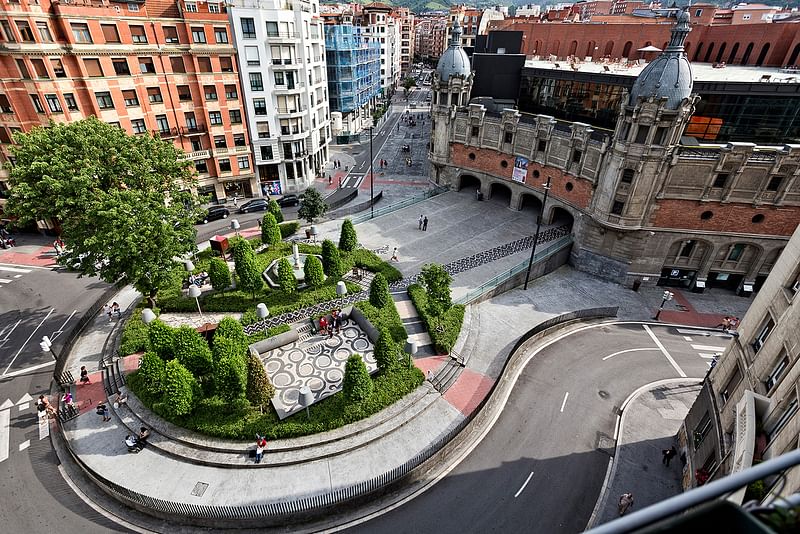
Azkuna Zentroa—Location: Bilbao, Bizkaia, Basque Country, Spain | Developer: Bilbao City Council, Alhóndiga, Center of Ocio y Cultura, Bilbao Ría 2000 | Designer: Philippe Starck | Site Size: 43,000 square meters (463,000 sq ft)
Azkuna Zentroa, formerly known as Alhóndiga Bilbao, is the art, culture, and leisure center in the heart of Bilbao, located inside one of the city’s most iconic buildings—the former municipal wine warehouse, which has more than 100 years of history. The building’s rehabilitation was commissioned to Philippe Starck, with the goal of creating a multidisciplinary space open to all and fostering holistic personal growth and the development of human relationships. It is a new public center that, with dynamism and innovation, hosts a range of activities dedicated to the diffusion and fusion—for the first time in the same space—of all the aspects, concerns, disciplines, curiosities, and hobbies that a person can have.

Buffalo Bayou Park—Location: Houston, Texas, United States | Developer: Buffalo Bayou Partnership | Designers: SWA Group, Page | Site Size: 160 acres (65 ha)
The renewed 160-acre (65 ha) Buffalo Bayou Park is a critical urban green space, extending upstream from downtown Houston along Buffalo Bayou, the principal drainage system for much of the city...Stretching over 2.3 miles (4 km), the park offers Houstonians access to one of the region’s last unchannelized urban waterways. Over ten miles (16 km) of pedestrian and bike paths, including four pedestrian bridges, offer opportunities to explore the restored ecology of the bayou while promoting healthy activities for Houston’s growing population.

Chicago Riverwalk—Location: Chicago, Illinois, United States | Developers: City of Chicago, Department of Transportation | Designers: Ross Barney Architects [All Phases], Sasaki [Phases 2, 3] Alfred Benesch & Company [Phases 2, 3], Jacobs/Ryan Associates [All Phases] and Collins Engineers [Phase 1]) | Site Size: 1.25-mile (2 km) linear park
The Chicago Riverwalk, which reused derelict infrastructure, is a 1.25-mile-long (2 km) civic space between Lake Michigan and the confluence of the Main Stem, North Branch, and South Branch of the Chicago River....This reinvention of urban life is at the heart of a new chapter for Chicago in which public space becomes a gathering ground for residents. Providing sweeping views and new connectivity, this civic amenity reunites the river and the city.
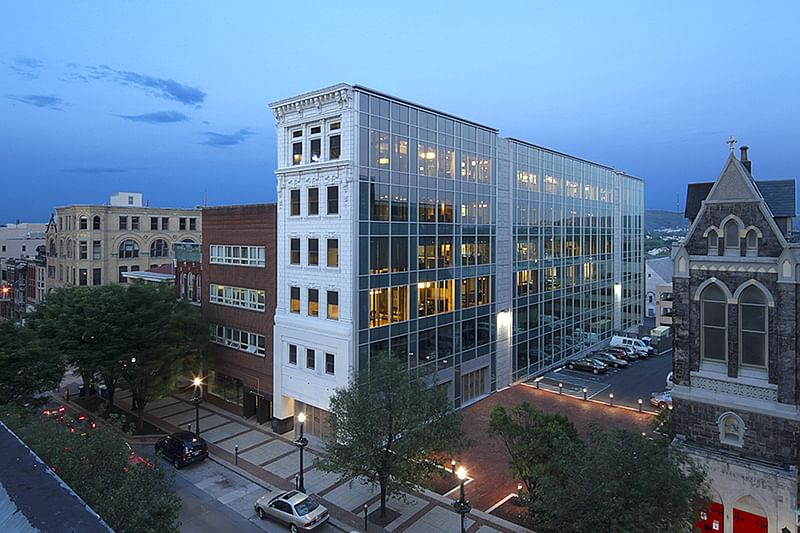
Downtown Allentown Revitalization District—Location: Allentown, Pennsylvania, United States | Owners/developers: Allentown | Neighborhood Improvement Zone Development Authority, Hammes Company, City Center Investment Corp. et al. | Designers: Sink Combs Dethlefs Architects (now Perkins+Will), Elkus–Manfredi Architects, et al.) | Site Size: 10 acres (4 ha)
While Pennsylvania’s two largest cities, Pittsburgh and Philadelphia, were being revitalized, the third largest, Allentown, continued to decline—until recently. Today, Allentown is the fastest-growing city in the state, thanks in large part to an innovative state law that created the Neighborhood Improvement Zone.
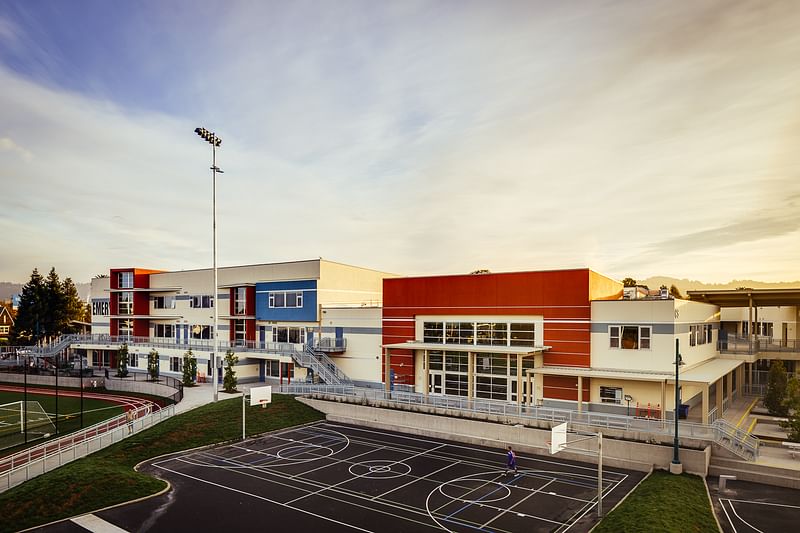
Emeryville Center of Community Life—Location: Emeryville, California, United States | Owners: Emery Unified School District, and City of Emeryville | Developers: Turner Construction Company, Swinerton Management & Consulting | Designers: Nexus Partners, DSK Architects, Mark Seiberlich Concordia, Steven Bingler, MKThink, Steve Kelley | Site Size: 7.6 acres (3 ha)
The Emeryville Center of Community Life (ECCL) is a groundbreaking joint-use partnership between the Emery Unified School District (EUSD) and the city of Emeryville. The $96 million center brings educational, health, family, and recreational services onto one central site and provides opportunities for other partners to offer community-enriching services. The ECCL maximizes the return on investment of taxpayer dollars by optimizing facility use and providing an important community resource for all Emeryville residents.
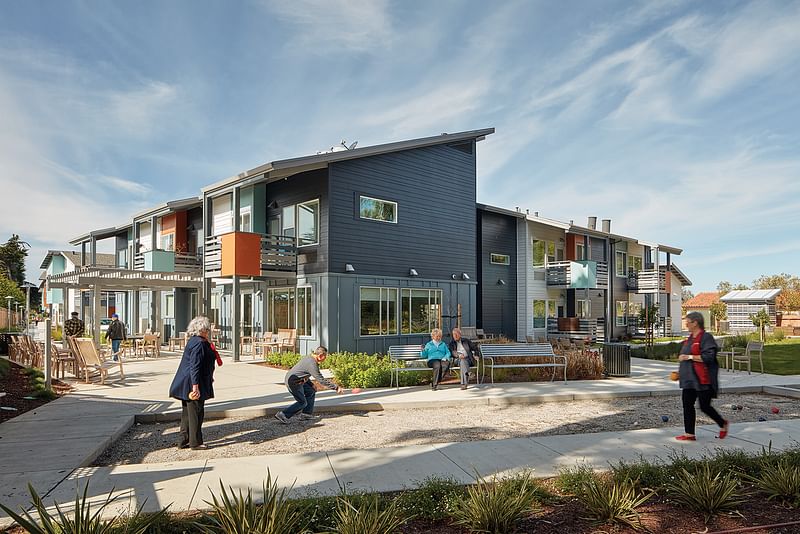
Half Moon Village—Location: Half Moon Bay, California, United States | Developer: MidPen Housing Corp. | Designer: Herman Coliver Locus Architecture | Site Size: 6 acres (2.4 ha)
Half Moon Village is the result of a vision held by the city of Half Moon Bay and San Mateo County to transform an underused site into an innovative community for seniors. The Half Moon Village apartment community provides 160 rental homes affordable to low-income seniors in the nation’s most expensive rental housing market.
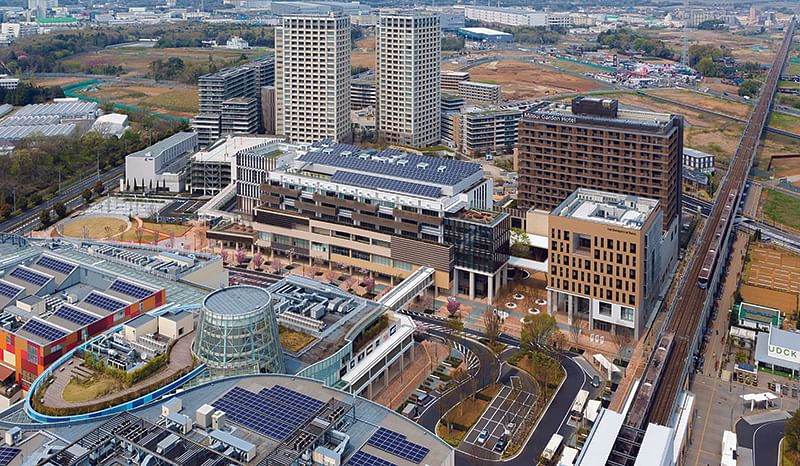
Kashiwa-no-ha Smart City—Location: Kashiwa City, Chiba Prefecture, Japan | Developer: Mitsui Fudosan Co.Ltd. | Master planner and coordinator: Urban Design Center Kashiwa-no-ha (UDCK) | Designers: ZGF, Nikken Sekkei Ltd., Jun Mitsui & Associates Inc. Architects | Landscape Architects: Studio on Site | Site Size: 675 acres (273 ha)
Located 18 miles (29 km) north of Tokyo, the transit-oriented development Kashiwa-no-ha Smart City pioneers an urban planning approach for a resilient neighborhood with an active and vital community. Since 2004, it has been refined to include community aspirations, respond to disasters, and support environmental and social initiatives. In 2016, Kashiwa-no-ha Smart City became the largest LEED Neighborhood Development Plan Platinum–certified smart city in the world.
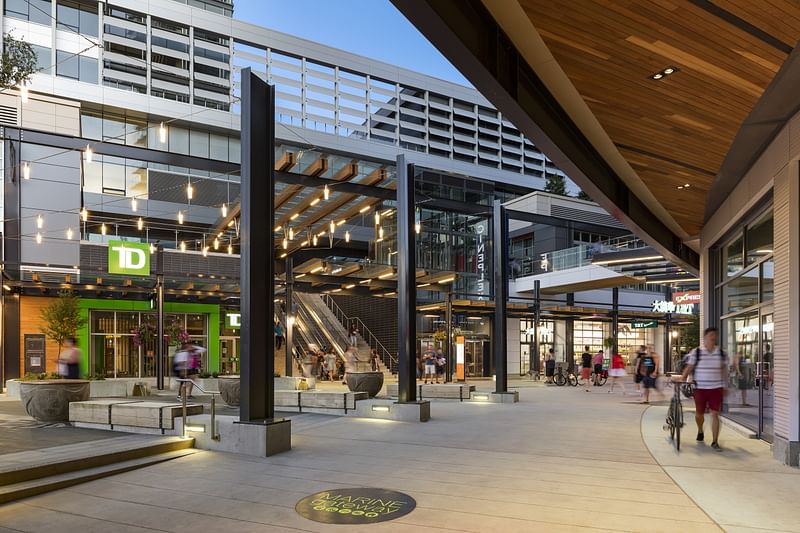
Marine Gateway—Location: Vancouver, British Columbia, Canada | Developer: PCI Developments | Designer: Perkins+Will | Site Size: 4.8 acres (2 ha)
Marine Gateway is Vancouver’s first transit-oriented, mixed-use development directly connected to two major transit stations—the Marine Drive Canada Line station and the South Vancouver bus loop. The 830,000-square-foot (77,000 sq m) landmark is composed of two neighborhood plazas, a 250,000-square-foot (23,000 sq m) office tower, 27 retailers occupying 230,000 square feet (21,000 sq m) of space, and 26- and 33-story high-rise buildings with 415 residential units and 46 rental suites.
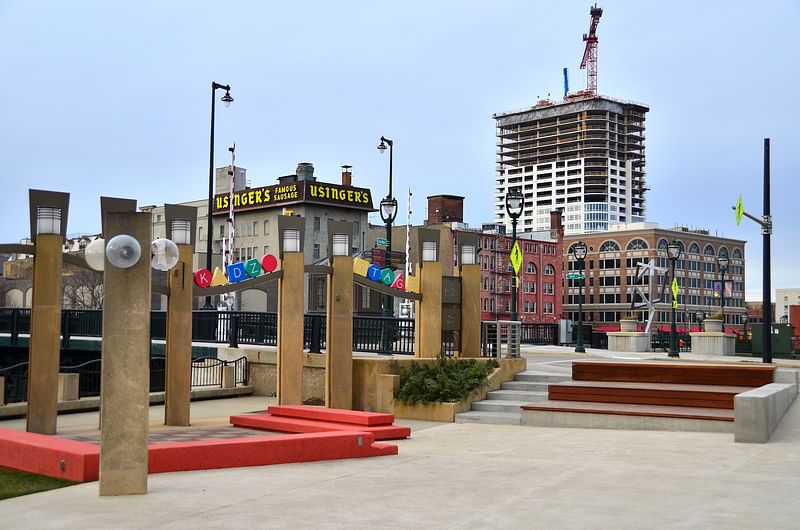
Milwaukee RiverWalk—Location: Milwaukee, Wisconsin, United States | Developers: The Milwaukee RiverWalk District, Inc., The Mandel Group, Business Improvement District No. 2 , The Brewery Works, Inc. et al | Designer: KenKay Associates, Mary Miss, Engberg Anderson Architects, et al. | Site Size: 9 acres (3.5 ha)
Milwaukee’s RiverWalk system draws hundreds of thousands of people to the shores of the Milwaukee River each year. Built through strong public/private partnerships, the RiverWalk is both a leisure space and a pedestrian thoroughfare. The accessible three-mile (4.8 km) system runs through the heart of downtown Milwaukee, with paths that average 12 feet wide (4 m) on each side of the river and public access points about every 400 feet (120 m).
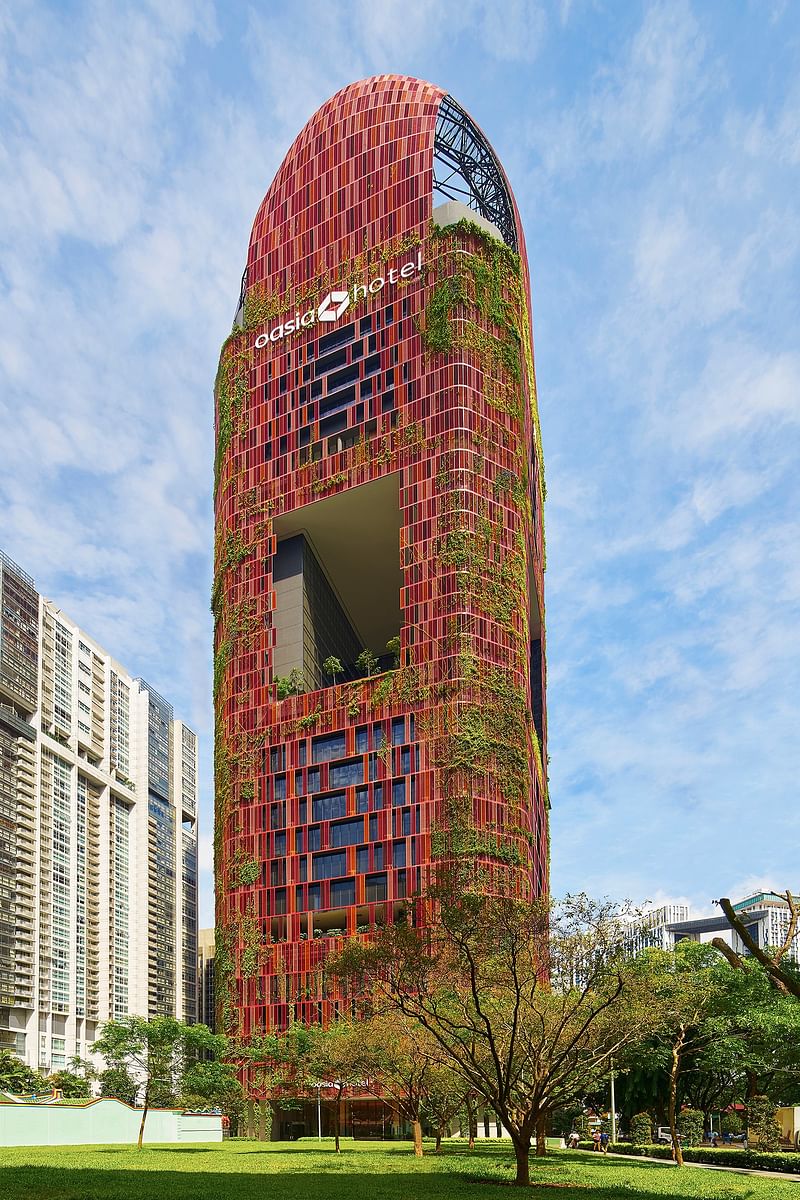
Oasia Hotel Downtown—Location: Singapore, Singapore | Developer: Far East Organization | Designer: WOHA | Site Size: 0.6 acres (0.2 ha)
Set against an urban landscape of concrete, steel, and glass in Tanjong Pagar, Singapore’s central business district, Oasia Hotel Downtown (OHD) stands out with its red silhouette clad in lush greenery. An integrated hotel/office development comprising a 27-story, 314-room business hotel and 100 new-age offices, OHD responds to the government’s vision for the precinct earmarked as the island’s next waterfront city with a mix of business, commercial, and residential activities.

Pearl—Location: San Antonio, Texas, United States| Developer: Silver Ventures, Inc. | Designers: Lake Flato Architects, Roman and Williams Buildings and Interiors, Don McDonald Architects, Sprinkle & Co. Architects, Ford Powell & Carson Architects, Jim Kissling Architecture, Dado Group, Clayton & Little Architecture, Ten Eyck Landscape Architects, Inc., Rialto Studio | Site Size: 21 acres (8.5 ha)
Pearl is an 850,000-square-foot (79,000 sq m) mixed-use development on the 21-acre (8.5 ha) site of the former Pearl Brewery in San Antonio....Pearl is now home to the third campus of the Culinary Institute of America and 18 chef/proprietor-driven restaurants and bars. A farmers market draws 5,000 to 7,000 people each weekend, and additional programming engages the community year-round. The 146-key Hotel Emma provides old-world comfort within the historic and industrial context of the original brewhouse. The project’s 432 rental residential units have the highest rental and occupancy rates in the city. The retail and office mix reflects a thoughtful selection that has created a uniquely San Antonio experience.
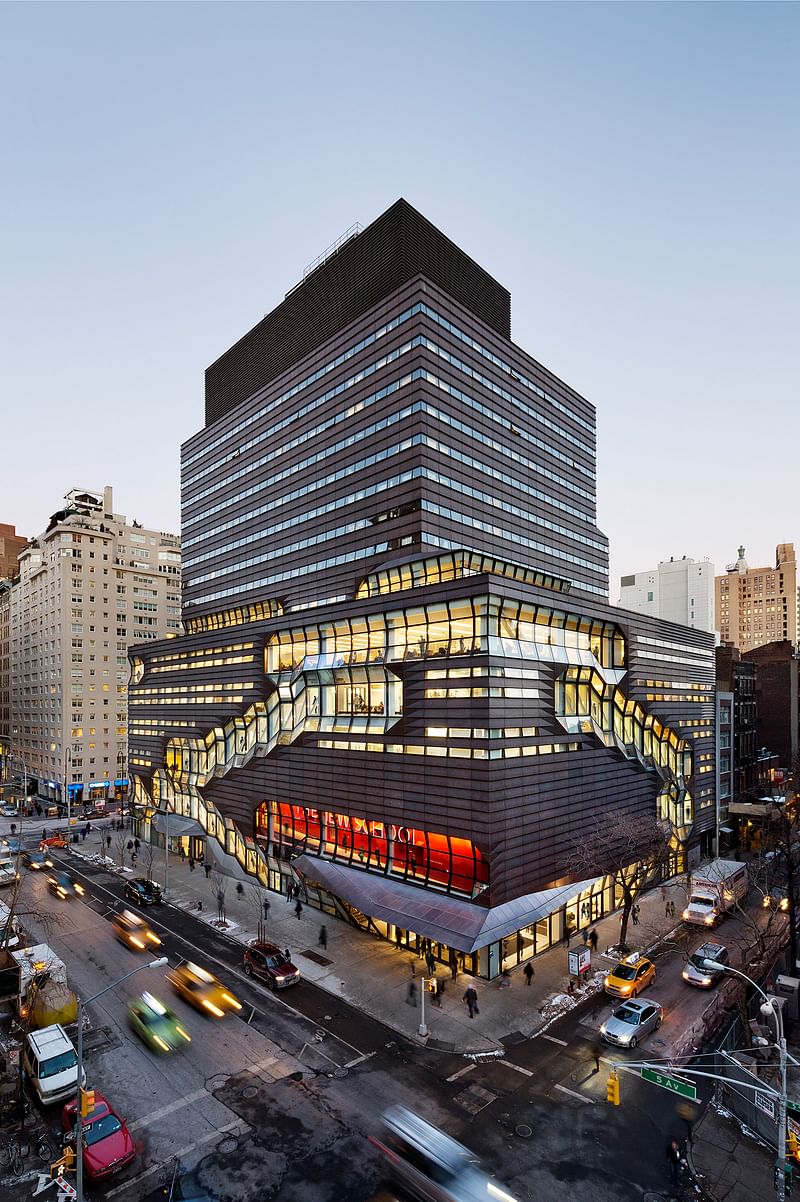
University Center: The New School—Location: New York, New York, United States | Developer: The Durst Organization | Designers: Skidmore, Owings & Merrill LLP, Mathews Nielsen Landscape Architects, P.C. | Project size: 371,052 square feet (35,000 sq m)
For nearly a century, the New School has been at the forefront of progressive education, with design and social research driving approaches to studying current issues, from democracy and urbanization to technology, sustainability, and globalization. In recent years, as the school outgrew its longtime home in the Greenwich Village neighborhood and found its real estate holdings spread across the city, this pedagogical model proved challenging to maintain without the physical plant to support it. The University Center both supports and furthers this model through its innovative design and responds to the school’s increasing demand for state-of-the-art, interdisciplinary spaces.
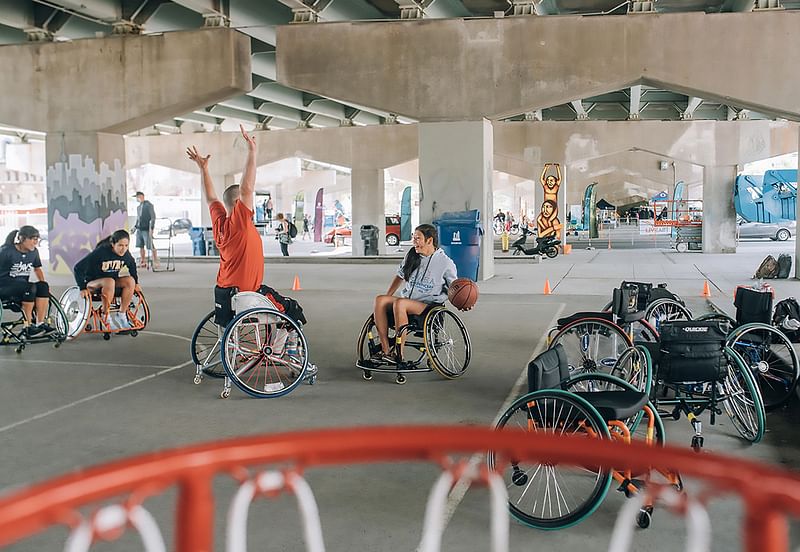
West Don Lands—Location: Toronto, Ontario, Canada | Master developer: Waterfront Toronto; precinct plan: Urban Design Associates | Developers: Urban Capital (River City), DREAM Unlimited, Kilmer Group (Canary District), Toronto Community Housing | Public realm and urban designers: the Planning Partnership with PFS Studio plus &Co., Michael Van Valkenburgh Associates Inc. | Landscape designers: Claude Cormier & Associates, NAK Design Strategies Architectural design: (River City) Saucier & Perrotte, ZAS Architects; (Canary District) architects Alliance, KPMB Architects, Page + Steele/IBI Group Architects, Daoust Lestage, MacLennan Jaunkalns Miller Architects, (Shade Pavillion) Maryann Thompson Architects | Design/builder: (Canary District) EllisDon Inc., Ledcor Group | Retail designer: Live Work Learn Play | Site size: 42 acres (17 ha)
In 2003, Waterfront Toronto, a tri-government agency, undertook the transformation of 79 acres (32 ha) of provincially owned brownfields in Toronto’s downtown east end. The West Don Lands project was designed through extensive community engagement and collaboration between government and the private sector. The result was an award-winning precinct plan for a pedestrian-focused community—built around parks, with housing for people of all ages, income levels, and abilities; well served by transit, retail, and community amenities; and developed in accordance with stringent sustainability requirements.

Share
0 Comments
Comment as :